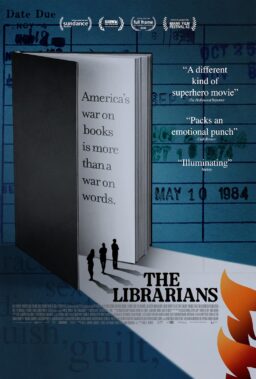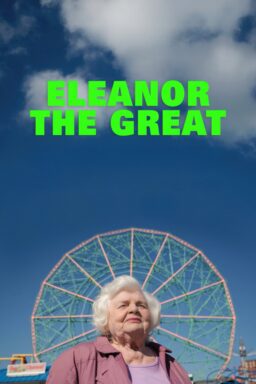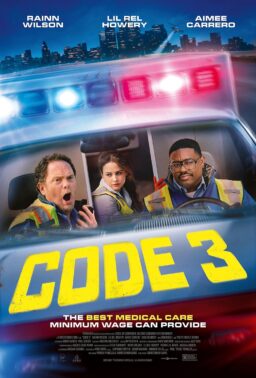The first time I made a year-end list for Scanners, I did it by suggesting double-bills of 2006 films with older films (much like what contributors to The Auteurs did this year). In 2007, I made my first year-end movie, inspired by “L’Eclisse,” as a tribute to the late Michelangelo Antonioni and a commentary on the WGA strike that was happening at the time. Last year, the concept was based on a shot of Hannah Schygulla, Goddess of Cinema, waking up, looking into the camera (in Fatih Akin’s “The Edge of Heaven“) and dreaming fragments of the films on my list.
This year, I’m not quite sure how it came together (see opening title), but I took my cue from my favorite movie of the year, the Coens’ “A Serious Man.” I knew I didn’t want to adhere to any rigid countdown hierarchy this time, but to let the movies converse with themselves through images. I chose the word “conversation” knowing there would be no dialog except at the very beginning and the very end, with the Jefferson Airplane song “Somebody to Love” (recurring element in “A Serious Man”) in between. That gave me approximately 2 minutes and 58 seconds for the montage….
Title. The effect of the scrambled letters dropping into place comes standard with the antiquated software I’m still using: iMovie ’07. It’s called “Gravity,” and I knew it would be ideal to drop into place before cutting to the blackboard in “A Serious Man” as Larry Gopnick “proved” the Uncertainty Principle (echoing his Schrödinger’s Cat proof from the post-prologue opening of the film). The indecipherable set of figures (as Larry’s voice comes up) falls into place as he “proves” that you can never know what’s going to happen. We start in close on Larry’s chalkboard math, then cut to a wide shot that shows he’s filled an enormous board with scribbles to prove something his own life persuasively demonstrates: that we can’t ever really know what’s going on. That’s kind of the predominant theme of my favorite movies this year, which are about attempts to cobble together a coherent system of meaning from perceptual bits and pieces. Wait a minute — isn’t that what all movies are about? Cut to one second of black (to let that sink in) and then:

“The Hurt Locker“ “When the truth is found to be lies…” Boots on the ground. A war built on lies. And a place where you can’t ever really know what’s going on. A man encased in a protective suit that doesn’t really offer him sufficient protection from reality (not unlike Larry Gopnick’s) looks around and tries to take in whatever threats may surround him. The first two, possibly three, shots are straight out of the movie, but I trimmed the third so that the slo-mo shot of the explosion coincided with the guitar strum right after the word “lies.” I liked the way the repeated shots of the explosion, the dust on the rusted car frame, and the rocks on the ground, matched the refrain of “somebody to love.” Then there’s just a snippet of the real-time explosion blowing the man off his feet and cut to:
“Liverpool” A white flash, which I inserted to provide an instantaneous transition from the bomb blast to a reverse angle of a man opening a door and stepping out into the bright sunlight. This is a merchant marine who has just asked for shore leave when his container ship docks (in Tierra del Fuego) to visit his mother… to see if she’s still alive. I like the chilly bright sunlight, followed by an image of an early stage of his journey to his home village (stumbling in the snow by the containers), then on the back of a logging truck where he takes a swig of his vodka. These shots were taken from a trailer I found online. As were the next five, from…
“35 Shots of Rum“ The first four images are straight from an online trailer: subway tracks (continuing the motion from the previous shot of the logging truck); the driver of the subway train; going into a tunnel; a young woman on a subway (daughter of the driver in the previous shot, if you know the movie). So, now we’re fully in motion. Cut to a cab driver (surrogate mother of the girl in the previous shot) and her passenger (taken from later in the trailer), which offers a match to the driver’s head movement:
“Goodbye Solo“ The very first shot of the movie, with Solo driving and his passenger William (Red West) in the back seat. Ramin Bahrani, who likes to do many takes, told me he discovered the little “bloop” of light on the windshield at some point during the filming of this shot, and then tried to get it just right on each successive take. William has just made Solo (Souleymane Sy Savane) an offer in the moments before the movie begins, and Solo doesn’t take him seriously at first. Solo’s smile is the brightest thing in the shot, and the movie. The cab begins to turn. Cut to a reverse angle shot of:
“The Headless Woman” A winding road in Argentina. This is just the tail end of the through-the-windshield shot in the movie, followed by the first part of one of the most astounding shots of the year: A woman driving a car, seen in a perpendicular angle from the passenger seat, hits a bump in the road. Dust fills the window behind her. When it clears, we noticed a smudged handprint on the glass. When, and how, did it get there? What, if anything, does it signify? In the full shot (which goes on for much longer than the piece I selected), she starts to turn around, but doesn’t. She begins to open her door, but doesn’t. Instead, she puts on the sunglasses which were knocked off in the impact, and continues forward with blinders, never looking back. For the purposes of this montage, I cut as she tilts her head down. To:
“Inglourious Basterds“ Another blonde in a red dress, looking down. Shoshanna (Mélanie Laurent) surveys the lobby of her theater on the night of the Nazi brass-attended premiere of the propaganda movie, “Nation’s Pride,” starring her admirer Fredrick Zoller (Daniel Brühl). This is a gorgeous, Ophulsian shot, lasting about a minute and a half, and I decided to include the whole thing (except for a fraction of a second at the end that would have involved a subtitle as Col. Hans Landa (Christoph Waltz) greets Bridget on Hammersmark (Diane Kruger) and the Basterds posing as Italian filmmakers. This is the only time all the major characters are united in one shot (though they don’t share the same framespace at the same time), and it’s accomplished so effortlessly that I don’t think many viewers even noticed it was one long take, tracing an “S” shape (almost) in the air over the lobby. Let’s look at how it works:
We start on Shoshanna, surveying the crowd. As she descends the staircase (I like the way the song goes into its percussive section — “Your eyes I say your eyes may look like his” — but that’s just happenstance), a cigarette girl passes her going up the stairs. Zoller, in a white uniform, meets her and the camera, sweeping both into the conversational cluster where he’s standing with his director, Joseph Goebbels (Sylvester Groth), to introduce her to the great German actor, Emil Jannings (Hilmar Eichhorn). Jannings kisses her hand and, with his other arm, makes an expansive gesture admiring her beautiful cinema. As he does so, choreographed with his movement, another cigarette girl enters the foreground from the left and the camera follows her — dipping to look at her tray and then her bare back. She passes a white-uniformed waiter holding a tray of champagne glasses and, as the camera cranes back up toward the balcony again, another waiter in white enters from the right, going into the auditorium itself.
Gliding past the golden Nazi eagle that has been installed on the balcony railing, the camera synchs up with a third white-uniformed waiter who brings us to Landa. We don’t know how Landa knows him by name — “Thank you, Hermann” — but it’s a nice touch. Like Shoshanna at the beginning of the shot, Landa is conducting surveillance from above. (Another musical coincidence occurs here, as Landa is staring at the crowd below. I have always thought the most devastating line in “Somebody to Love” was the one that here appears to be directed at Landa: “And your friends, baby, they treat you like a guest…” True, in his case, because he has no friends.) Landa spies… something and makes his way to the stairway on the right, passing three Hitler Youth on their way up. The camera pulls back and glides to the right where Bridget stands with Lt. Aldo Rayne (Brad Pitt — though we don’t see his face in this shot) and the incognito Basterds, meeting Landa head-on as he breaks into their conversation. (And, by the way, do those double-fluorescent-tube light fixtures remind you of dynamite?) Match cut to:
“The Limits of Control“ Another preening fashion model, dressed for an occasion, striding toward the camera: Tilda Swinton, in platinum wig, oversized sunglasses and cowboy hat, moving (in slow motion, we realize) across a plaza in Madrid. We also don’t notice that the camera is moving — in the opposite direction, right to left — until the silhouette of Isaach De Bankolé’s head moves through the foreground like an orbiting planet. She’s being watched and she knows it. Again, I like that Grace Slick’s “loooooooooooooooo-uh-ove!” slides along with the camera movement. Cut to:
“Police, Adjective“ A drab backstreet in Bucharest, where a boy walks perpendicular to the camera and then disappears around the corner. There’s a slight rack focus, the background blurs, and a man steps into the frame and follows the boy. More surveillance. Cut to:
“The Informant!” An equally drab office, in which the camera recedes before a paranoid Mark Whitacre (Matt Damon), who is followed by two men in suits. Cut to:
“Fantastic Mr. Fox“ An almost-matching shot of masked Mr. Fox followed by two junior burglars, advancing toward the camera in time to the music. Cut to: Rat, also coming toward the camera, snapping his fingers to the music. Cut to:
“Sita Sings the Blues“ A four-armed, lotus-crowned Earth Goddess dancing toward the camera in outer space. Cut to:
“The White Ribbon“ A young couple (the schoolteacher/narrator and a nanny), awkwardly dancing during a village celebration. I like the little stumble, which hearkens back (in this montage) to the slight slip in the snow by the containers from “Liverpool” and looks forward to the old lady climbing the staircase from “Summer Hours.” Cut to: A group of village children, backs to the camera, walking away from us and toward… something. If you’ve seen Michael Haneke’s movie, an ominous note is sounded here. Cut to:
“Liverpool” The main character walking away, through the snow and out of the movie. Cut to:
“Summer Hours” The family matriarch, making her exit into the shadows at the top of the stairs and stumbling a bit with the exertion. (It’s not actually her final moment in the movie — there’s one more brief scene — but she is tired.) Cut to:
“Goodbye Solo” Close-up of Solo’s face, seen through the windshield. He’s behind the wheel again, but he’s no longer smiling. The next shot is just a portion of the movie’s final shot — an unspeakably gorgeous autumn landscape, with a road that disappears around the bend, another in a series of exits. “Somebody to Love” comes to an abrupt conclusion partway through, followed by silence and then some harp music from “A Serious Man.”
The harp is joined by an off-kilter figure on piano, which composer Carter Burwell described in this interview:
One thing I enjoy about this harp motif is that it’s polyrhythmic: you can count it in three or you can count it in four. I personally enjoy that ambiguity. The piece is so repetitious, and yet you’re not sure where the bar lines are, so it’s kind of interesting. […]
I tried to put other things against that motif that didn’t quite fit with it. So there’s a piano melody that’s in a different meter than the harp piece.
Two more images are interspersed with the end credits, both from “A Serious Man.” The first, summing up the whole thing, is the shot of “The Mentaculus,” a book of intricate calculations by Larry’s brother Arthur (Richard Kind) that maybe explains a lot, but maybe means nothing at all. It’s meant to recall the scramble of letters at the beginning, and it also reminds me a little of Wendy’s discovery of Jack’s writing in “The Shining.” I tried to make the pages flip with the music.

The next shot is one of my most treasured images of the year — the introduction of Arlen Finkle (Ari Hoptman — Best Supporting Actor!) from the tenure committee, italicized in Larry Gopnick’s office doorway. His hilariously unstable diagonal posture accentuates his oddly passive-aggressive way of conveying — or not conveying — information.
Finally, there’s a snippet from one of the year’s most astounding and unsettlingly funny scenes: the meeting at Embers between Larry, his wife Judith (Sari Lennick) and the man she’s leaving him for, Sy Abelman (Sy Ableman). Of course, Judith sits with Sy, and the Coens (and Roger Deakins) shoot them in a fairly secure composition (notice the vertical stripes and orderly line of lights behind them, and the balancing light on the left), while Larry is pushed almost entirely out of the frame on the right. In the reverse angle, Larry is being pushed into the corner by Sy’s head and shoulder, and the arrangement of figures behind him is comparatively unbalanced.
All of this reinforces what’s happening in the scene, which is that Sy and Judith are bulldozing him, putting him on the defensive before he even knows what’s happening. They condescend or reprimand him for things he doesn’t even say or imply (Sy playing the sympathetic good cop to Judith’s snippy bad cop). Sy has a way with sentence fragments that turns “Most important…” into a fait accompli. And he’s so understanding — pretending to mollify Larry when he’s really turning the tables on him: “No one is playing the blame game, Larry…” — meaning he’s blaming Larry for implying that someone was. And then Judith goes for the jugular. I’ve watched this scene a dozen times and the slipperiness of the dynamics boggle my mind — and leave me gasping with laughter.
Just seemed like the right coda for this tribute to 2009 — with a quick fade to black as poor, (deliberately) misunderstood Larry tries in vain to defend himself: “I wasn’t…” — and Sy, so reasonably, cuts him off…










